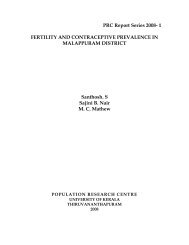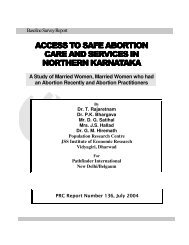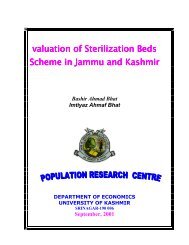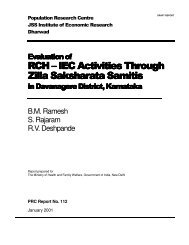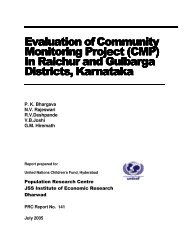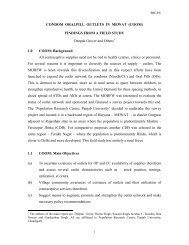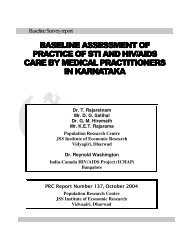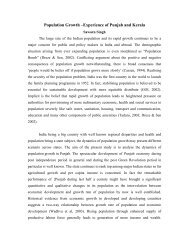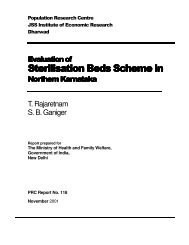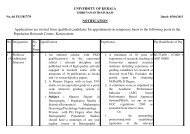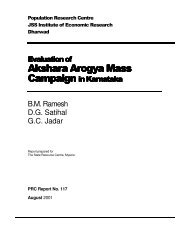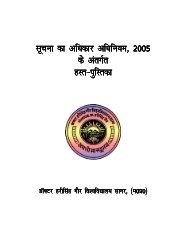Bellary District, - PRC
Bellary District, - PRC
Bellary District, - PRC
- No tags were found...
Create successful ePaper yourself
Turn your PDF publications into a flip-book with our unique Google optimized e-Paper software.
Wood is the major fuel used for cooking for both rural and urban households (88 per cent and 58 percent, respectively). In urban areas, 23 per cent of households use gas for cooking.Asset ownershipOverall, 46 per cent of households do not own any agricultural land, and landlessness in urban areas ismore than two and a half times of that in rural areas (82 per cent compared with 30 per cent).Interestingly, 17 per cent of the urban households ownagricultural lands. • • !"###$%& '$ ( %( ) * + , - ."##/0• , . 1 ), .1 !" 0/%%$!%%(2& )3 4 5 "##/0• ). 6+ , - ./%%70Only 29 per cent of the rural households own a radio or atransistor (compared with 39 per cent in urban areas). Ownershipof television, either black and white or colour television is muchlower among rural households than among urban households(only 19 and 4 per cent of rural households own a black and whiteand colour television, respectively, while 38 per cent and 17 percent of urban households own them). Similarly, only 5 per centof rural households own a telephone compared with 15 per cent ofurban households.Drinking waterOverall, 85 per cent of households (82 per cent in rural and 93 percent in urban areas) have an improved drinking water sourceavailable to the household. The improved facility includes tapwater, sanitary well, and bore well. The major sources ofdrinking water for rural households include: tap (63 per cent),bore well with hand pump or motor (18 per cent), and unprotecteddug well (8 per cent). Eighty-four per cent of urban households,on the other hand, receive drinking water from the tap.In rural areas, 9 in 10 households procure drinking water fromsources outside the premises of the household, compared with 8in 10 households in the state as a whole (MICS 2000). Even inurban areas of <strong>Bellary</strong>, 70 per cent of households get drinkingwater from sources outside the premises of the households,although they spend, on an average, relatively less time to procurewater than the rural households (23 minutes compared with 27minutes).Overall, 64 per cent of households do not purify water beforedrinking, and this proportion is 49 per cent in urban areas. Themost common method used to purify water is straining the waterthrough a cloth, though this practice does not necessarily addsafety to water.Source of drinking water and toiletPer cent of households Rural Urban TotalHaving improved source of drinking water 82 93 85Having other source of drinking water 18 7 15Using a toilet 13 68 303



